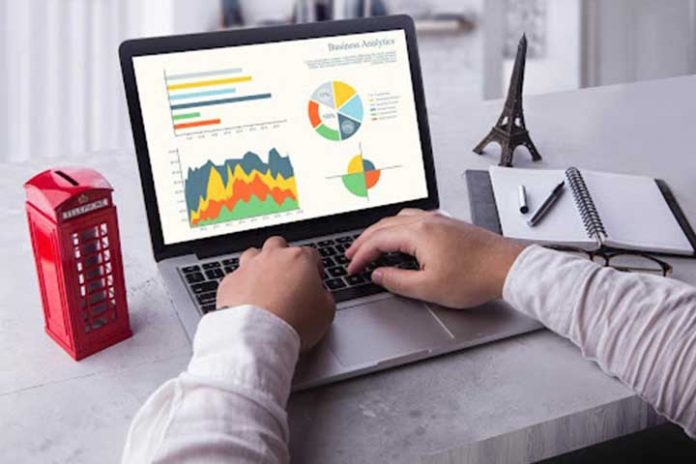Statistics is often considered a technical subject involving numbers and data, the efforts of which are meant for archives or information storage. However, it is rarely viewed in a more personal manner. Statistics are there in everyday instances of our life, even in the most mundane activities such as choosing a brand of shoes at the store.
By definition, it is the science or practice of collecting and analyzing data. Although it uses numerical values, such quantitative information helps us understand the world a little better. Statistical inference tells a story in a data format, which we can then use in interpreting situations and making decisions. The decision-making aspect is the reason why statistics is a core aspect of government, health, and other prominent sectors.
Here are some of the major ways that applied statistics affect our daily lives.
Table of Contents
Weather forecasts
Weather forecasts are a perfect real-life example of how statistics affect daily life and decisions. The computers used in forecasting weather run on algorithms based on statistical functions. These computer models compare prior weather with the current weather to predict future weather. This is valuable information for forecasters, but how does it extend to everyday people?
Say you’re planning a weekend trip to the beach or the countryside. You’ll naturally check the weather to ensure that your plans won’t be hampered by a cloudy sky or heavy rain. You then make your decision based on the weather readings.
Teaching and education
If you’re a teacher by profession, you’ll have more than one use for statistical data. The goal of a teacher is to impart knowledge, but often the methods used do not produce the desired results in students. Statistics help you recognize what education technique works on which pupils and why.
In the first place, the statistical expectation of comprehension serves as a measure to determine whether your methods are as effective as they should be. You’ll then need to apply stats again to find the best teaching methods.
Also, there is stored data on all levels of student testing, from kindergarten to high school diploma. Teachers can calculate the average grade to know the expectation and work towards helping students meet and surpass the mark. A Master’s in Applied Statistics would provide you with the necessary knowledge and skills to better understand and implement this data.
On the other hand, the government utilizes statistics when making or modifying educational policies. For instance, the quantitative data gathered during the pandemic helped many governments understand that parents wanted their kids to continue schooling, hence the directive for e-learning.
Health and medicine
Statistics are behind all medical studies, and this sector is one of its biggest applications. Before a drug is released to the market or prescribed by a physician, it must have shown a valid rate of effectiveness through statistical testing. Statistics also help doctors keep track of the progression of an unborn baby in the womb and the progression of diseases, among other things.
For the regular person, when you buy a migraine pill or an inhaler from the pharmacy, you know which brand to request because statistics have shown it to be the most effective.
Financial decisions
Banks and financial institutions apply statistical knowledge to various practices. They use it to lower risk in lending operations, analyze the financial market, and make financial policy decisions. Regular account holders can also benefit from statistical inference to make decisions about how to move their money.
Stats help you understand which investments are riskier and the potential of stocks before you make up your mind on whether or not to make the purchase. Your financial planning and budgeting decisions are all driven by past and present stats, which indicate the most profitable ways to save and build your finances. If you’re a cryptocurrency enthusiast, you’ll find that statistics help in predicting Bitcoin price estimates for the future.
Sports
Statistics are vital in sports, especially in big tournaments such as the World Cup or the Olympics. Statistics help pundits predict how the top players will perform or the country that’s most likely to win the most awards.
On a more personal level, statistics are also essential to the individual sportsperson. They help you gauge your performance in a particular sport and keep track of your improvement.
Consumer goods
Statistics help shops keep an inventory of the goods that are in store and those that are not. For chain stores with multiple outlets, deciding when to ship products and to which location is also possible thanks to statistical data. Market analysis is also a significant part of businesses that depends significantly on this science. Companies need to figure out how many of their target customers are situated in an area, their income level, and their preferences in order to cater to consumer needs adequately.
You may be wondering how exactly you benefit from this. Imagine going to the grocery store and not finding the vegetables, fruit, or cereal you need because the business cannot keep track of inventory – or because the brands on offer aren’t those you prefer. That’s quite an unpleasant scenario. Fortunately, statistics applied in these businesses ensure that you’ll hardly find yourself in this situation. Stats enable businesses to maintain a steady stock level and provide the goods that are favored in your community.
Conclusion
Statistics play a greater role in everyday life than you know. Besides the uses indicated above, statistical processes are also beneficial in insurance, transportation, and quality testing. The presence of good transport networks and the value of the insurance premium you pay are all results of some level of statistical evaluation.
Even when you purchase a single apple from a batch to check how healthy or how sweet the fruit is, you are doing quality testing on a single sample. The quality of the apple will determine whether you go back to purchase a whole batch or look elsewhere.

